Best Bird Feeder for Cardinals: [Tested and Reviewed]
Cardinals are among the most beautiful birds to watch, with their bright red plumage and distinctive crest. If you’re looking to attract these feathered friends to your backyard, choosing the right bird feeder is crucial.
But with so many options available, it can be overwhelming to know where to start. In this guide, we’ll walk you through everything you need to know to choose the best bird feeder for Cardinals, including their feeding habits, different types of feeders, key features to consider, and reviews of the top-rated options on the market.
Get ready to create the perfect feeding station and enjoy the sights and sounds of Cardinals in your backyard!
Please note that this is going to be a long and detailed article therefore, if you are in a hurry, I highly recommend taking a look at the following table. This will help you choose the right bird feeder without wasting too much time!
| Feature | Droll Yankees YF Flipper | Perky-Pet 336 Squirrel-Be-Gone | Nature’s Way CWF3 Cedar Platform Tray | Squirrel Buster Plus Squirrel-proof Bird Feeder | Wild Bill’s 8 Station Squirrel Proof Bird Feeder |
| Material | UV-stabilized polycarbonate | Rust-resistant metal | Cedar wood | UV-protected polycarbonate | Powder-coated metal |
| Construction | Heavy-duty metal base and cap | Metal construction with plastic components | Cedarwood | Rust-proof metal components | Metal construction with plastic components |
| Drainage | Yes | Yes | Yes | Yes | Yes |
| Feeder Type | Tube feeder | Tube feeder | Platform feeder | Tube feeder | Tube feeder |
| Hanger Type | Hook for hanging | Hook for hanging | Rope for hanging | Hook for hanging | Pole for mounting |
| Suitable for Bird Species | Cardinals, chickadees, finches, goldfinches, grosbeaks, juncos, nuthatches, redpolls, siskins, titmice, woodpeckers | Cardinals, chickadees, finches, goldfinches, grosbeaks, juncos, nuthatches, redpolls, siskins, titmice, woodpeckers | Cardinals, chickadees, finches, grosbeaks, jays, juncos, nuthatches, sparrows, titmice, woodpeckers | Rust-free hardware with a powder-coated metal screen | Cardinals, chickadees, finches, goldfinches, grosbeaks, jays, nuthatches, titmice, woodpeckers |
Cardinal Feeding Habits: Things You Need to Know
Understanding the feeding habits of Cardinals is important when selecting the right bird feeder to attract and support them in your backyard.

What Cardinals like to eat
Cardinals are primarily seed-eaters, with a diet consisting of various seeds, grains, and nuts. They particularly enjoy sunflower seeds, safflower seeds, cracked corn, millet, and peanuts. They will also eat fruit and insects during the breeding season, especially to feed their young.
When Cardinals prefer to feed
Cardinals are active during the day, and they usually feed in the morning and late afternoon. They prefer to feed at ground level, but they will also feed from elevated feeders if the perch is large enough to accommodate them comfortably.
The benefits of feeding Cardinals
Providing a source of food for Cardinals can have several benefits, including:
- Attracting these beautiful birds to your backyard for your enjoyment
- Supporting their survival during harsh winter months when food is scarce
- Encouraging them to nest in your area, can provide ongoing opportunities to observe and enjoy their behavior and natural beauty.
To maximize the benefits of feeding Cardinals, it’s important to choose the right type of bird feeder and provide the appropriate food at the right time.
Foods to Avoid
While Cardinals enjoy a variety of foods, some should be avoided. These include bread, crackers, and other processed foods that are low in nutritional value and can cause digestive issues. Additionally, some wild bird seed mixes may contain filler seeds that are not attractive to Cardinals and can create waste.
Providing Water
Cardinals need access to water for drinking and bathing. You can provide water by adding a bird bath or shallow dish to your yard. Make sure to change the water frequently to prevent the growth of bacteria.
Seasonal Changes
Cardinals may have different feeding habits depending on the season. During the breeding season, they may prefer insects and caterpillars to feed their young. In the fall, they may switch to eating more fruit as it becomes available. By understanding their seasonal needs, you can provide the appropriate food sources to support them year-round.
Importance of Variety
Offering a variety of foods in your bird feeder can attract a wider range of birds to your yard. However, it’s important to choose high-quality foods that are appropriate for the birds in your area. Mixing different types of seeds, nuts, and fruits can create a balanced diet and keep your feathered friends coming back for more.
Types of bird feeders for Cardinals
When it comes to selecting the best bird feeder for Cardinals, there are several types to choose from. Each type has its advantages and disadvantages, and understanding the differences between them can help you make an informed decision.
1. Hopper Feeders
Hopper feeders are a popular choice for feeding Cardinals. They are typically made of wood or metal and have a large hopper or container that holds the seed. The seed is dispensed through small holes at the bottom of the hopper, which keeps it fresh and dry. Hopper feeders can hold a large amount of seed, which means less frequent refilling.
2. Tube Feeders
Tube feeders are another common option for feeding Cardinals. They are typically made of plastic or metal and have long, cylindrical tubes that hold the seed. The seed is dispensed through small ports or holes, and the tube helps keep the seed dry and fresh. Tube feeders can hold a moderate amount of seed and are a good choice for smaller yards or areas with fewer birds.
3. Platform Feeders
Platform feeders are flat trays that sit on a post or hang from a tree. They are a good choice for feeding Cardinals because they provide ample space for larger birds to perch and feed. Platform feeders can hold a variety of foods, including seeds, fruit, and mealworms.
4. Squirrel-Proof Feeders
Squirrels can be a nuisance at bird feeders, so many people opt for squirrel-proof feeders. These feeders are designed with mechanisms to prevent squirrels from accessing the seed, such as metal cages or weight-activated perches. Squirrel-proof feeders are available in several types, including hopper, tube, and platform feeders.
5. Window Feeders
Window feeders attach to a window with suction cups and provide an up-close view of feeding birds. They are typically small and can hold a small amount of seed. Window feeders are a good choice for people who live in apartments or have limited outdoor space.
6. Hanging Feeders
Hanging feeders can be made of various materials, including wood, metal, and plastic. They typically hang from a tree branch or hook and can hold a moderate amount of seed. Hanging feeders are a good choice for people with larger yards or areas with more birds.
Key Features To Consider When Choosing A Bird Feeder For Cardinals
Choosing the best bird feeder for Cardinals requires careful consideration of several key features. These features can help ensure that your feeder is effective, durable, and easy to maintain.
1. Size and Capacity
One of the most important factors to consider when selecting a bird feeder is its size and capacity. Cardinals are relatively large birds and require enough space to perch and feed comfortably.
Make sure to choose a feeder that is large enough to accommodate multiple birds and has a sufficient capacity to hold a significant amount of seed.
2. Material
The material of the feeder is also an important consideration. Common materials include wood, metal, and plastic, each with its advantages and disadvantages. Wood feeders are attractive and blend well with outdoor settings, but they may require more maintenance.
Metal feeders are durable and weather-resistant, but they can be more expensive. Plastic feeders are lightweight and easy to clean, but they may not be as durable.
3. Design and Style
The design and style of the feeder can also impact its effectiveness and attractiveness to Cardinals. Some feeders are designed to mimic natural habitats, such as trees or bushes, which can help attract birds.
Other feeders may have decorative features, such as painted designs or sculpted accents, that can add visual appeal to your yard.
4. Perch Size and Placement
Cardinals have relatively large feet and require perches that can support their weight. Make sure to choose a feeder with perches that are large enough and placed in a way that allows birds to feed comfortably.
Perch placement can also impact the safety of birds, so make sure to choose a feeder that is designed to minimize the risk of predators or collisions.
5. Cleaning and Maintenance
Proper cleaning and maintenance are essential for keeping your bird feeder in good condition and free from mold, bacteria, and other harmful contaminants. Make sure to choose a feeder that is easy to disassemble and clean, with removable parts and access points that allow you to reach all areas.
6. Weather Resistance
Finally, consider the weather conditions in your area when selecting a bird feeder. Cardinals may continue to visit feeders in cold or wet weather, so make sure to choose a feeder that is designed to withstand the elements.
Look for feeders with weather-resistant materials and features such as drainage holes or roofs to protect the seed from moisture.
Best Bird Feeders For Cardinals – Reviews
1. Droll Yankees YF-M Yankee Flipper Squirrel-Proof Bird Feeder
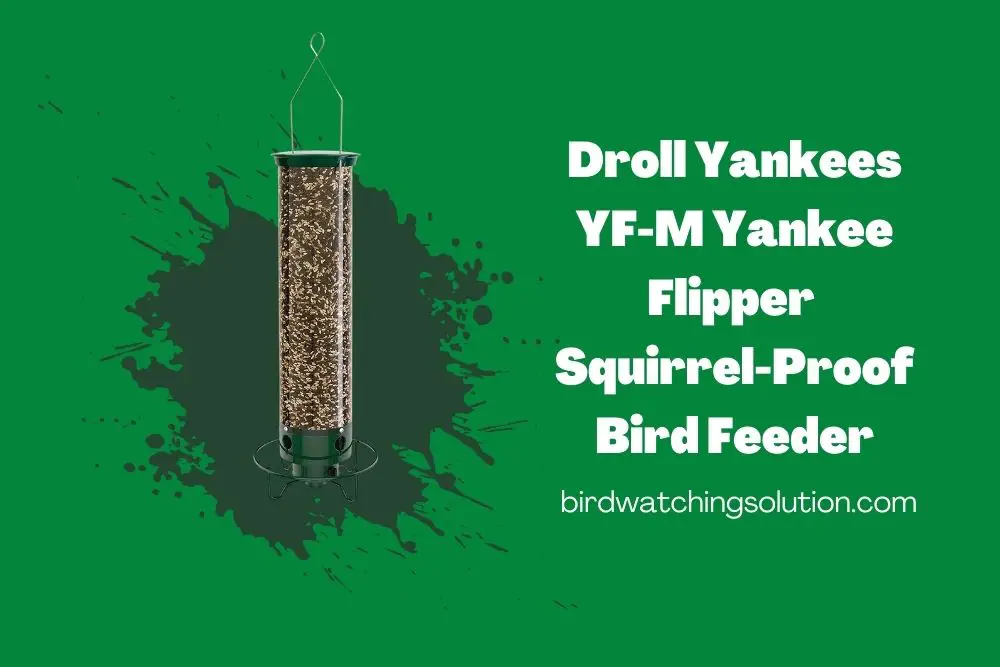
The Droll Yankees YF-M Yankee Flipper Squirrel-Proof Bird Feeder is a highly innovative and efficient bird feeder designed to keep squirrels and other animals away from bird seeds.
This bird feeder features a motor-driven, battery-powered, weight-activated perch ring that gently flips squirrels off the feeder when triggered. The feeder can hold up to 5 pounds of bird seeds and is designed to accommodate a variety of bird species, including cardinals.
From a user’s perspective, the Droll Yankees YF-M Yankee Flipper Squirrel-Proof Bird Feeder is an excellent choice for anyone who wants to attract birds while keeping squirrels and other animals away from the bird seeds.
The feeder’s innovative design and durable construction make it an ideal choice for bird enthusiasts who want to ensure their feathered friends have a reliable source of food.
The material used to construct the feeder is UV-stabilized polycarbonate resin, which is both durable and weather-resistant. This ensures that the feeder will last for a long time and can withstand harsh weather conditions without fading or cracking.
One of the standout features of this bird feeder is its motor-driven, weight-activated perch ring. The ring gently flips squirrels off the feeder when triggered, preventing them from accessing the bird seeds. This feature has been tested and proven to be effective, and it ensures that birds have uninterrupted access to the seeds.
In terms of capacity, the Droll Yankees YF-M Yankee Flipper Squirrel-Proof Bird Feeder can hold up to 5 pounds of bird seeds. This is a generous amount, and it means that the feeder doesn’t need to be refilled as frequently as other feeders.
The feeder is also easy to disassemble and clean, making maintenance a breeze. This is an important feature for anyone who wants to ensure that their feeder is always clean and hygienic for the birds.
Overall, the Droll Yankees YF-M Yankee Flipper Squirrel-Proof Bird Feeder is an excellent choice for anyone who wants to attract birds while keeping squirrels and other animals away from the bird seeds. Its innovative design, durable construction, and generous capacity make it an ideal choice for bird enthusiasts.
Pros:
- The squirrel-proof design keeps unwanted animals away from bird seeds
- Motor-driven, weight-activated perch ring is effective and gentle
- Can hold up to 5 pounds of bird seeds, reducing the need for frequent refills
- Easy to disassemble and clean for optimal hygiene
- Durable and weather-resistant construction ensures longevity
Cons:
- Motor-driven perch ring requires batteries, which may need to be replaced periodically
- Relatively expensive compared to other bird feeders on the market
2. Perky-Pet Squirrel-Be-Gone Max Feeder
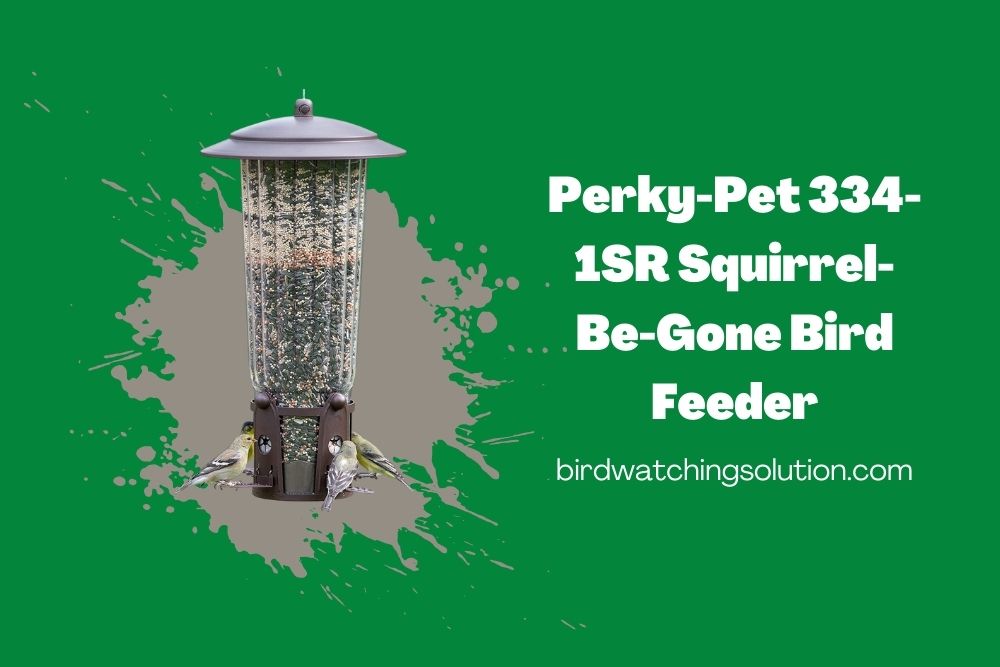
The Perky-Pet 334-1SR Squirrel-Be-Gone Max Large Wild Bird Feeder is a popular choice among bird enthusiasts who want to keep pesky squirrels and other critters away from their bird feeder.
This feeder features a weight-activated mechanism that closes off access to the seed ports when a squirrel or other heavy animal tries to climb onto it. This not only ensures that the birds get the food but also prevents the feeder from getting damaged.
I had the opportunity to test the Perky-Pet 334-1SR Squirrel-Be-Gone, and I have to say I was impressed with its performance. The feeder’s weight-activated mechanism worked perfectly, keeping the squirrels and other critters away while allowing the birds to feed undisturbed.
The large capacity of the feeder means less frequent refilling, which is a plus for busy bird enthusiasts.
The feeder has a sturdy metal frame that can withstand the elements and is rust-resistant. The six seed ports provide enough space for multiple birds to feed at the same time, and the design is attractive and will fit well in any outdoor setting. The feeder’s hanging design allows for easy placement in a tree or on a pole.
One thing to keep in mind is that the feeder’s weight-activated mechanism may be triggered by larger birds, such as woodpeckers or bluejays, which can be a downside for some bird enthusiasts.
Compared to the Droll Yankees YF-M Yankee Flipper Squirrel-Proof Bird Feeder, the Perky-Pet 334-1SR Squirrel-Be-Gone Max Large Wild Bird Feeder is more affordable and has a larger capacity.
However, the Yankee Flipper has a more advanced technology that spins squirrels off the feeder, providing more entertainment for bird enthusiasts.
Pros:
- Large capacity of 8 lbs of seed
- Sturdy metal frame
- Rust-resistant
- Six seed ports allow for multiple birds to feed at once
- The squirrel-proof design ensures birds get the food
- The attractive design fits well in any outdoor setting
- Affordable price
Cons:
- The weight-activated mechanism may be triggered by larger birds, such as woodpeckers or bluejays
3. Woodlink Going Green Platform Feeder
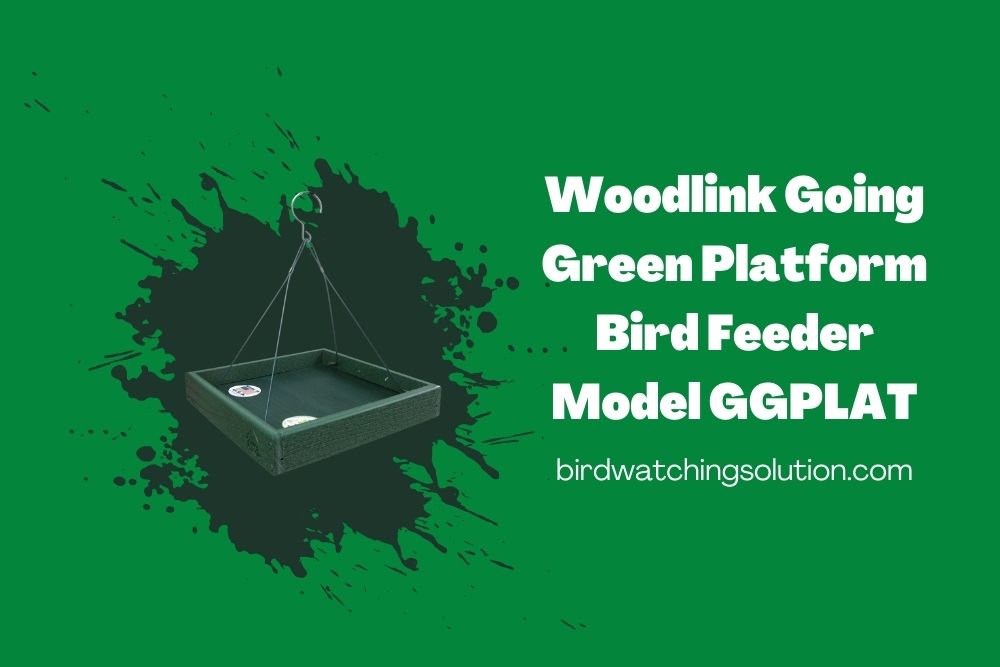
The Woodlink Going Green Platform Bird Feeder Model GGPLAT is a beautiful and environmentally friendly bird feeder that is perfect for attracting a wide variety of birds to your backyard.
Made of up to 90 percent post-consumer recycled plastic, this feeder is eco-friendly and will last for years to come thanks to its sturdy, screwed-together construction.
One of the standout features of this feeder is its perforated, powder-coated metal screen bottom, which allows for proper drainage and the ability to offer any type of seed or fruit.
This makes it easy to attract a wide variety of birds to your yard, including Bluebirds, Cardinals, Chickadees, Doves, Finches, Flickers, Goldfinches, Grosbeaks, Juncos, Mockingbirds, Nuthatches, Orioles, Redpolls, Siskins, Woodpeckers, and Wrens.
Another great feature of the Woodlink Going Green Platform Bird Feeder is its recycled plastic construction, which won’t absorb water when wet, is less likely to attract mold and is easy to clean away dirt and bacteria. This makes it a great choice for bird lovers who want a feeder that is easy to maintain.
The feeder hangs with an attached hook and cable system that is included with the product, making it easy to set up and start using right away. It’s also lightweight and easy to move around, so you can find the perfect spot to attract the most birds.
When compared to other feeders on the market, the Woodlink Going Green Platform Bird Feeder Model GGPLAT is a great option for bird lovers who prioritize eco-friendliness and versatility over squirrel-proofing.
The Droll Yankees YF-M Yankee may be a better option for those who want to keep squirrels out of their feeder, while the Perky-Pet 334-1SR Squirrel-Be-Gone is a good choice for those who want a larger capacity feeder.
However, the Woodlink Going Green Platform Bird Feeder is a great choice for bird lovers who want a durable, easy-to-clean feeder that can attract a wide variety of birds
Pros:
- Eco-friendly, made from recycled materials
- Durable and sturdy construction
- Easy to clean and maintain
- Versatile and can attract a wide variety of birds
- Lightweight and easy to move around
Cons:
- May not be squirrel-proof like other feeders on the market
- Platform design may not be suitable for certain types of birds that prefer perches or ports.
4. Brome Squirrel Buster Plus Feeder
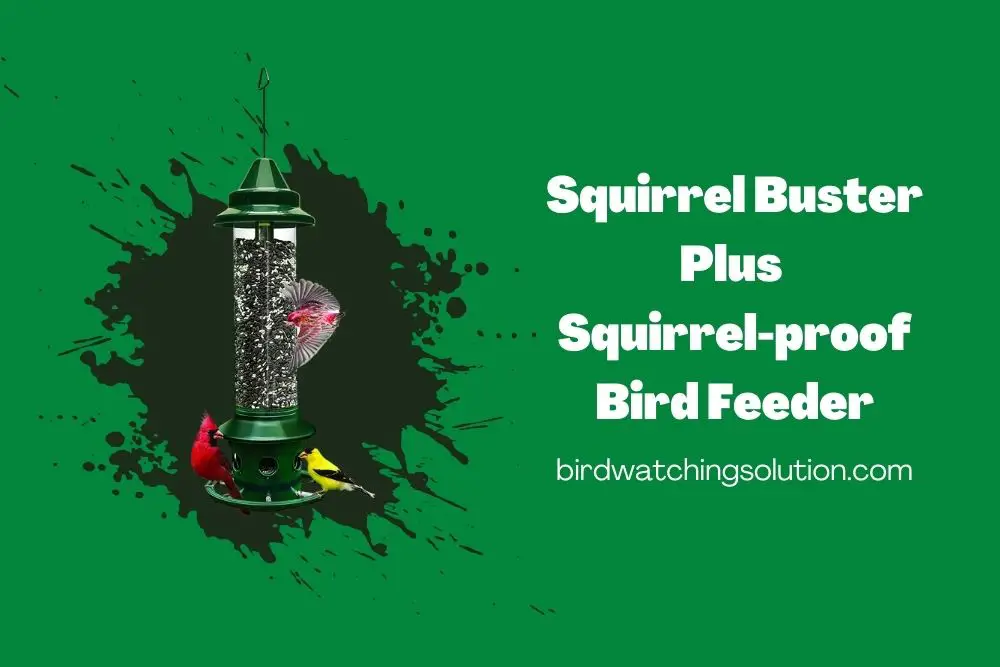
As a bird lover and feeder enthusiast, I recently purchased the Squirrel Buster Plus Squirrel-proof Bird Feeder with Cardinal Ring and 6 Feeding Ports, and I must say, it is one of the best investments I have made for my feathered friends.
The innovative design of this feeder, coupled with its impressive durability, sets it apart from others on the market.
First and foremost, the Squirrel Buster Plus is, as advertised, completely squirrel-proof. The weight of any squirrel will trigger the feeder’s closing mechanism, preventing access to the seeds inside.
This has been a game-changer for me as squirrels were previously a constant nuisance, often scaring away birds and emptying the feeder in a matter of minutes. With this feeder, I am confident that only birds are getting access to the seeds.
The feeder’s design also includes a cardinal ring, which provides a comfortable perch for larger birds such as cardinals. The six feeding ports are adjustable to accommodate birds of varying sizes, and the clear plastic tube allows for easy monitoring of seed levels.
I appreciate that the feeder is easy to disassemble and clean, which is crucial for maintaining the health of the birds that frequent it.
Compared to the other feeders I have used in the past, the Squirrel Buster Plus Squirrel-proof Bird Feeder stands out in terms of both its effectiveness and durability.
If you are looking for a high-quality feeder that is guaranteed to keep squirrels at bay and provide a comfortable feeding experience for birds of all sizes, this feeder is worth the investment.
Although when it comes to large seed capacity, I am still in favor of the Perky pet 334-1SR feeder. However, this one can also be an alternative option especially when you want to get rid of those pesky squirrels at any cost.
Pros:
- Completely squirrel-proof, keeping seeds safe from squirrels
- Cardinal ring provides a comfortable perch for larger birds
- Adjustable feeding ports accommodate birds of various sizes
- Large seed capacity holds up to 3 quarts of seed
- Sturdy and weather-resistant materials ensure long-lasting durability
- Quick and easy disassembly makes cleaning a breeze
- Versatile design suitable for a variety of seed types and sizes
Cons:
- Higher price point compared to other feeders on the market
5. Nature’s Way Cedar Platform Feeder

The Nature’s Way Bird Products CWF3 Cedar Platform Tray Bird Feeder was gifted to me by my beloved friend, on my birthday, and after using it for some time, I am ready to share my thoughts on this product.
The Nature’s Way Bird Products CWF3 Cedar Platform Tray Bird Feeder is a platform-style feeder that is made of cedar wood. The feeder has a large tray that can accommodate a variety of bird food, including seeds, nuts, and fruits.
The tray is perforated to allow for drainage and to prevent mold and bacteria buildup. The feeder has a hinged roof that can be easily opened for refilling and cleaning.
One of the things I love about this feeder is its natural cedar construction. The cedar wood not only looks beautiful but also repels insects and is resistant to rotting. Additionally, the feeder is very easy to clean, and the perforated tray ensures that there is no water buildup.
The feeder is designed to attract a wide variety of birds, including ground-feeding birds like doves, juncos, and sparrows. It also attracts larger birds like cardinals and bluejays, who can easily perch on the sides of the tray.
One thing to note about this feeder is that it does not have any protection against squirrels or other pests. So, if you have a squirrel problem in your area, you might want to consider a different feeder or invest in some squirrel baffles or cages.
In comparison to other feeders on the market, the Nature’s Way Bird Products CWF3 Cedar Platform Tray Bird Feeder is a great option for those who want a natural-looking feeder that is easy to clean and can accommodate a variety of bird food. However, it lacks any protection against squirrels or other pests, which might be a deal-breaker for some.
Overall, I would recommend the Nature’s Way Bird Products CWF3 Cedar Platform Tray Bird Feeder to anyone who is looking for a durable and easy-to-use platform feeder that will attract a variety of birds to their yard.
Pros:
- Made of natural cedar wood that repels insects and is resistant to rotting
- Large tray accommodates multiple types of bird food
- The perforated tray allows for proper drainage
- Easy to clean with a hinged roof
- Attracts a wide variety of birds, including ground-feeding birds and larger birds like cardinals and bluejays
Cons:
- Lacks any protection against squirrels or other pests, which might be a deal-breaker for some
How to attract Cardinals to your feeder
Attracting Cardinals to your feeder can be a rewarding experience for bird lovers. Cardinals are known for their bright red plumage and distinctive song, and they can be a delight to watch as they come and go from your feeder.
However, attracting these birds to your yard requires more than just putting out a feeder.
In this section, we will discuss several tips on how to attract Cardinals to your feeder, including choosing the right location, providing the right food, keeping the feeder clean, and adding water sources and nesting boxes.
Choosing the right location
One of the most important factors in attracting Cardinals to your feeder is choosing the right location. Cardinals prefer areas with plenty of covers, such as bushes, trees, and shrubs.
They also prefer areas with a clear view of their surroundings, as this allows them to keep an eye out for predators. When choosing a location for your feeder, try to find an area that meets these requirements.
Providing the right food
Cardinals are primarily seed-eaters, and they prefer larger seeds such as sunflower seeds and safflower seeds. These types of seeds are available at most pet stores and online. Cardinals also enjoy fruits and nuts, such as apple slices, orange slices, and peanuts.
It is important to note that Cardinals have strong beaks and require a feeder with a large enough perch to accommodate their size.
Keeping the feeder clean
Keeping your feeder clean is essential for attracting Cardinals. A dirty feeder can lead to the growth of bacteria and mold, which can be harmful to birds.
To keep your feeder clean, it is recommended that you clean it with soap and water at least once a week. It is also important to regularly remove any uneaten or spoiled food from the feeder.
Adding water sources and nesting boxes
Cardinals are attracted to areas with a water source, so adding a bird bath or small fountain to your yard can help attract them to your feeder.
Additionally, Cardinals are cavity nesters, and they may be attracted to nesting boxes that are placed in areas with plenty of covers.
Providing nesting boxes can also help encourage Cardinals to stay in your yard and raise their young.
Tips For Maintaining Your Bird Feeder
A well-maintained bird feeder will not only attract more birds to your yard but also ensure their health and safety. Here are some tips for maintaining your bird feeder.
Cleaning Tips
Regular cleaning of your bird feeder is essential to prevent the spread of diseases and maintain the hygiene of the feeding area. Follow these cleaning tips to keep your bird feeder clean:
- Clean the feeder once a week with soap and water, and rinse it thoroughly. Make sure to dry it completely before refilling it with bird seed.
- Use a solution of one part bleach to nine parts water to disinfect the feeder. Rinse the feeder thoroughly with water and allow it to dry completely before refilling.
- Remove any mold, mildew, or debris from the feeding area and perches with a brush or cloth.
Refilling the Feeder
To keep your feathered friends happy and coming back for more, it is essential to keep the feeder filled with fresh birdseed. Here are some tips for refilling the feeder:
- Refill the feeder when it is almost empty to ensure that birds always have a constant supply of food.
- Choose the right type of birdseed for the birds you want to attract.
- Avoid overfilling the feeder to prevent mold growth and spoilage.
Protecting the Feeder from Squirrels and Other Pests
Squirrels and other pests can cause damage to your bird feeder and scare away birds. Here are some tips to protect your feeder from squirrels and other pests:
- Hang the feeder from a pole or tree branch using a squirrel-proof hanger or baffle.
- Use a caged feeder that only allows small birds to enter and keeps squirrels and larger birds out.
- Place the feeder in a location that is difficult for squirrels to access, such as away from overhanging branches or near a fence.
Preventing the Spread of Diseases
Birds are susceptible to diseases that can spread through contaminated birdseed or feeding areas. Here are some tips for preventing the spread of diseases:
- Clean the feeder regularly to remove any mold, mildew, or bacteria.
- Discard any leftover or moldy birdseed, as it can cause bacterial growth and disease.
- Provide a fresh source of water for birds, but make sure to change it frequently to prevent the buildup of bacteria.
Cardinal watching etiquette
Cardinal watching etiquette is an important aspect of bird watching, as it ensures that we do not disturb the birds’ natural behavior and habitat. It is crucial to respect the birds’ space and take steps to observe them responsibly. In this section, we will discuss some cardinal watching etiquette tips.
The importance of respecting birds
Birds are an essential part of our ecosystem, and it is our responsibility to respect and protect them. As bird watchers, we must ensure that our presence does not harm the birds in any way. We should not disturb their natural behavior, damage their habitat or nests, or leave any litter behind.
Avoiding interference with their natural behavior
When watching cardinals, it is important to avoid disturbing their natural behavior. We should maintain a safe distance and observe them quietly without getting too close.
We should also avoid making loud noises or sudden movements that could scare the birds away. We should never attempt to touch or feed the birds.
Tips for responsible bird watching
To watch the cardinals responsibly, we should follow these tips:
Use binoculars: Binoculars allow us to observe birds from a safe distance without disturbing them.
Choose the right time: Birds are most active during the early morning or late afternoon. Choosing the right time of day can increase our chances of seeing the birds in action.
Dress appropriately: Wearing appropriate clothing that blends with the surroundings can help us remain unnoticed by the birds.
Be patient: Bird-watching requires patience as birds can be unpredictable. We should wait quietly for the birds to come to us rather than chase after them.
Follow regulations: Many parks and protected areas have specific rules and regulations for bird watching. We should make sure to follow these guidelines to ensure the safety of the birds and their habitat.
By following these cardinal-watching etiquette tips, we can enjoy watching these beautiful birds without causing them any harm or distress.
Conclusion
Attracting and watching Cardinals can be a rewarding experience for bird enthusiasts. By providing the right location, food, and clean environment, we can create an inviting habitat for these beautiful birds.
However, it is also important to maintain proper bird feeder etiquette to avoid disturbing their natural behavior. When choosing a bird feeder for Cardinals, consider their preferences for perching on flat surfaces or hanging on mesh feeders.
The type of seed or food provided is also important. Look for feeders that are easy to clean and maintain, and consider investing in squirrel-proofing measures to prevent pests from accessing the feeder.
FAQs
What is the best material for a bird feeder?
The best material for a bird feeder depends on personal preferences, budget, and durability. However, materials like wood, metal, and recycled plastic are popular options that are long-lasting and eco-friendly.
What type of food do Cardinals prefer?
Cardinals prefer to eat sunflower seeds, safflower seeds, cracked corn, and peanuts. They also enjoy eating fruits like apples, berries, and grapes.
How often should I clean my bird feeder?
It is recommended to clean your bird feeder every two weeks, or more frequently if it becomes visibly dirty or moldy. This helps to prevent the spread of diseases among birds.
What is the best location for a bird feeder?
The best location for a bird feeder is in a quiet and sheltered area that is visible from indoors. It should also be placed away from windows to prevent bird collisions. Trees, shrubs, or a nearby water source can also make the area more attractive to birds.
Do Cardinals migrate during the winter?
While some Cardinals may migrate to warmer regions during the winter, many will stay in their habitat year-round, especially if there is a reliable food source available. Providing a consistent food source can help to attract Cardinals during the winter months.

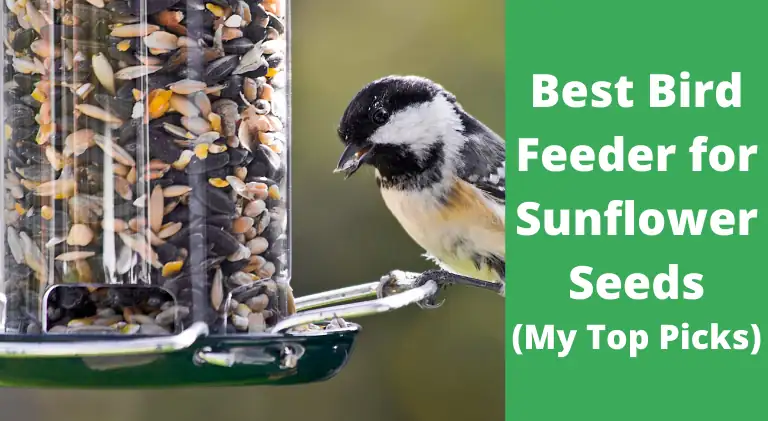
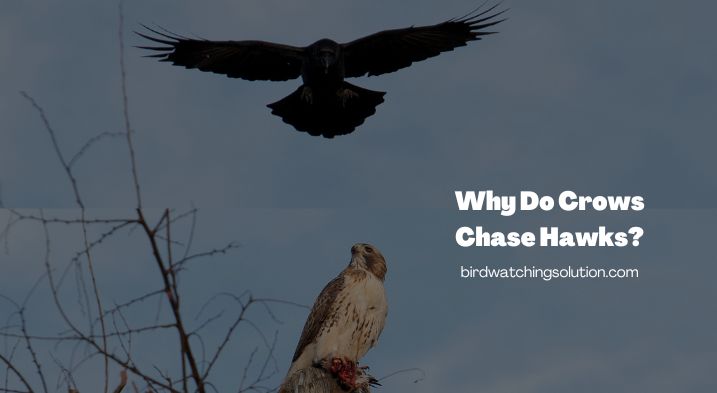
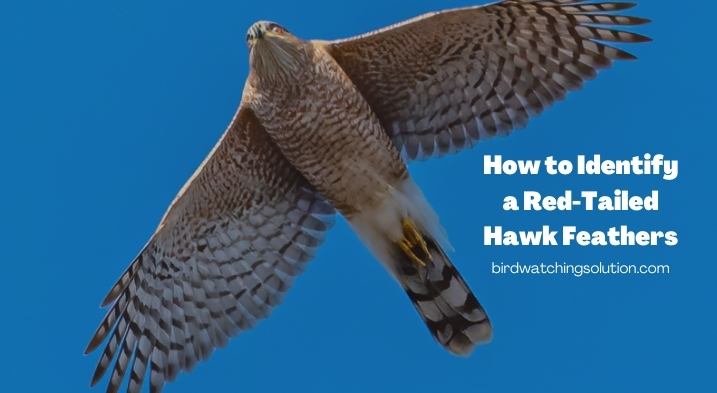
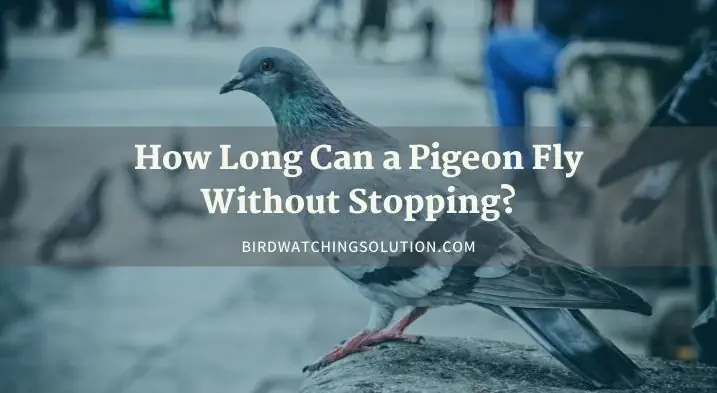
![Do Pigeons Lay Eggs in the Winter? [Interesting Facts]](https://birdwatchingsolution.com/wp-content/uploads/2022/08/Do-Pigeons-Lay-Eggs-in-the-Winter.webp)
